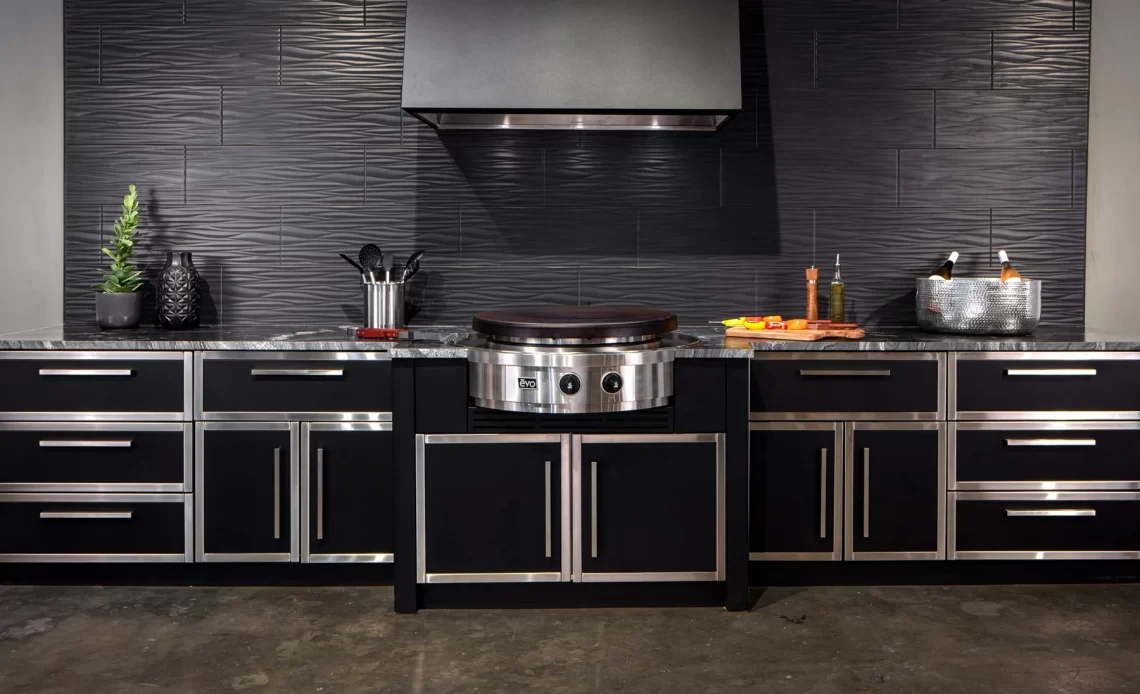Outdoor kitchens have become increasingly popular as homeowners embrace open-air living and take their culinary adventures outdoors. Choosing the right material for your outdoor kitchen is critical—not just for aesthetics, but also for durability and functionality. Among the most popular materials are solid wood, plywood, and stainless steel. Today, we’ll dive into a comprehensive comparison, with key emphasis placed on stainless steel, the material most commonly associated with modern outdoor kitchens.
Key Factors to Consider
When selecting materials for an outdoor kitchen, it’s essential to evaluate these critical factors:
Durability: The ability to withstand harsh environmental conditions.
Maintenance: How easily the material can be cleaned and maintained.
Aesthetic Appeal: How the material complements your outdoor design.
Cost: Balancing your budget with quality and longevity.
Let’s explore how solid wood, plywood, and stainless steel measure up across these parameters.
1. Solid Wood Outdoor Kitchens
Solid wood is a classic material in many indoor kitchens, but when used outdoors, it requires extra consideration.
Strengths
Aesthetic Appeal: Wood adds warmth and rustic charm, making it an excellent choice for traditional or farmhouse-style outdoor kitchens.
Customizable: Can be stained or painted to match specific design preferences.
Drawbacks
Durability: Wood struggles with exposure to moisture, heat, and UV rays. It can rot, warp, or crack over time.
Maintenance: High maintenance; requires sealing and protective coatings regularly to prevent damage.
Cost: Solid wood materials can be expensive, especially hardwoods like teak, which are better suited for outdoor use.
Solid wood is beautiful, but often impractical for long-term outdoor kitchen installations.
2. Plywood Outdoor Kitchens
Plywood is frequently chosen as a cost-effective alternative to solid wood.
Strengths
Affordability: Cheaper than solid wood, making it a budget-friendly option.
Lightweight: Easier to work with during installation than heavier materials.
Improved Durability (When treated): Marine-grade plywood can withstand moisture better than standard plywood.
Drawbacks
Durability: Even marine-grade or treated plywood is susceptible to delamination, rotting, and warping under prolonged exposure to the elements.
Aesthetic Appeal: While plywood can be finished or painted, it doesn’t offer the same premium look as wood or stainless steel.
Maintenance: Requires protective coatings and regular upkeep to extend longevity.
While plywood is economical and easy to install, it isn’t the most reliable option for outdoor kitchens exposed to extreme weather.
3. Stainless Steel Outdoor Kitchens
Stainless steel stands head and shoulders above other materials when it comes to outdoor kitchens. Loved by designers and homeowners alike, it has become the go-to material for modern outdoor spaces.
Strengths
Durability: Stainless steel is renowned for its unparalleled ability to withstand the elements. It doesn’t crack, warp, or rot like wood, nor does it delaminate like plywood. It is highly resistant to:
Moisture: It won’t rust or corrode, especially when high-quality grades like 304 or 316 stainless steel are used.
Heat: Perfect for areas near grills and cooktops as it remains stable under high temperatures.
UV Rays: It doesn’t fade or weaken under sunlight.
Low Maintenance
Cleaning stainless steel is a breeze. A simple wipe-down with a damp cloth and stainless steel cleaner is all it takes to keep your outdoor kitchen gleaming. Unlike wood or plywood, it doesn’t require sanding, resealing, or painting.
Aesthetic Appeal
If you’re aiming for a modern, sleek, and sophisticated look, stainless steel delivers.
Complements contemporary outdoor designs beautifully.
Can be integrated seamlessly with stone countertops and backsplashes.
Hygiene
Stainless steel is non-porous, meaning it doesn’t absorb bacteria or food particles. This makes it the most sanitary choice for an outdoor cooking area.
Longevity
While stainless steel may have a higher upfront cost, its long lifespan offsets the investment. You won’t need frequent replacements or repairs, making it one of the most cost-effective options in the long run.
Drawbacks
While stainless steel is undoubtedly excellent, it’s worth considering a few challenges:
Cost: Higher upfront cost compared to other materials like plywood. However, it pays off with longevity and minimal maintenance.
Heat Conductivity: Can become hot in direct sunlight, although this is mitigated with proper shading and positioning during installation.
Scratches and Smudges: It is prone to fingerprints and superficial scratches, although these can be easily buffed out.
Even with these minor drawbacks, stainless steel remains the preferred choice for professionals and homeowners alike.
Why Stainless Steel Wins the Battle
When comparing solid wood, plywood, and stainless steel for outdoor kitchens, stainless steel emerges as the clear winner in terms of:
Durability in harsh outdoor conditions.
Minimal maintenance requirements.
Hygiene and cleanliness for food preparation.
Sleek, modern style that complements various design aesthetics.
While wood may cater to rustic tastes and plywood may be easy on the wallet, neither can stand up to stainless steel’s unmatched performance in an outdoor environment.
Selecting the right material for your outdoor kitchen can directly impact its longevity, appearance, and usability. If you’re looking for a material that can endure the rigors of the outdoors while offering ease of maintenance and contemporary style, stainless steel is hands down the ultimate choice.

